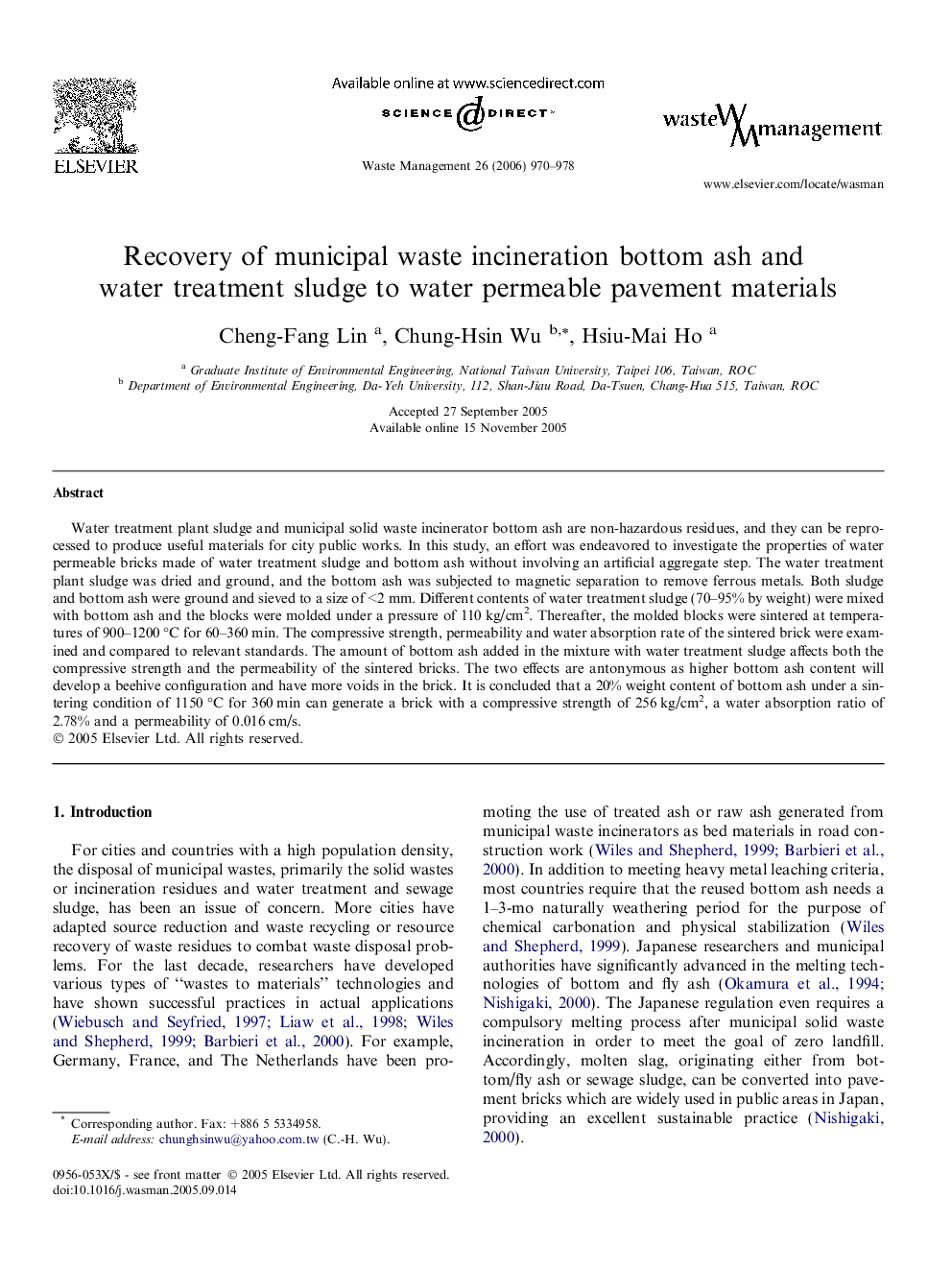| Article ID | Journal | Published Year | Pages | File Type |
|---|---|---|---|---|
| 4474245 | Waste Management | 2006 | 9 Pages |
Water treatment plant sludge and municipal solid waste incinerator bottom ash are non-hazardous residues, and they can be reprocessed to produce useful materials for city public works. In this study, an effort was endeavored to investigate the properties of water permeable bricks made of water treatment sludge and bottom ash without involving an artificial aggregate step. The water treatment plant sludge was dried and ground, and the bottom ash was subjected to magnetic separation to remove ferrous metals. Both sludge and bottom ash were ground and sieved to a size of <2 mm. Different contents of water treatment sludge (70–95% by weight) were mixed with bottom ash and the blocks were molded under a pressure of 110 kg/cm2. Thereafter, the molded blocks were sintered at temperatures of 900–1200 °C for 60–360 min. The compressive strength, permeability and water absorption rate of the sintered brick were examined and compared to relevant standards. The amount of bottom ash added in the mixture with water treatment sludge affects both the compressive strength and the permeability of the sintered bricks. The two effects are antonymous as higher bottom ash content will develop a beehive configuration and have more voids in the brick. It is concluded that a 20% weight content of bottom ash under a sintering condition of 1150 °C for 360 min can generate a brick with a compressive strength of 256 kg/cm2, a water absorption ratio of 2.78% and a permeability of 0.016 cm/s.
